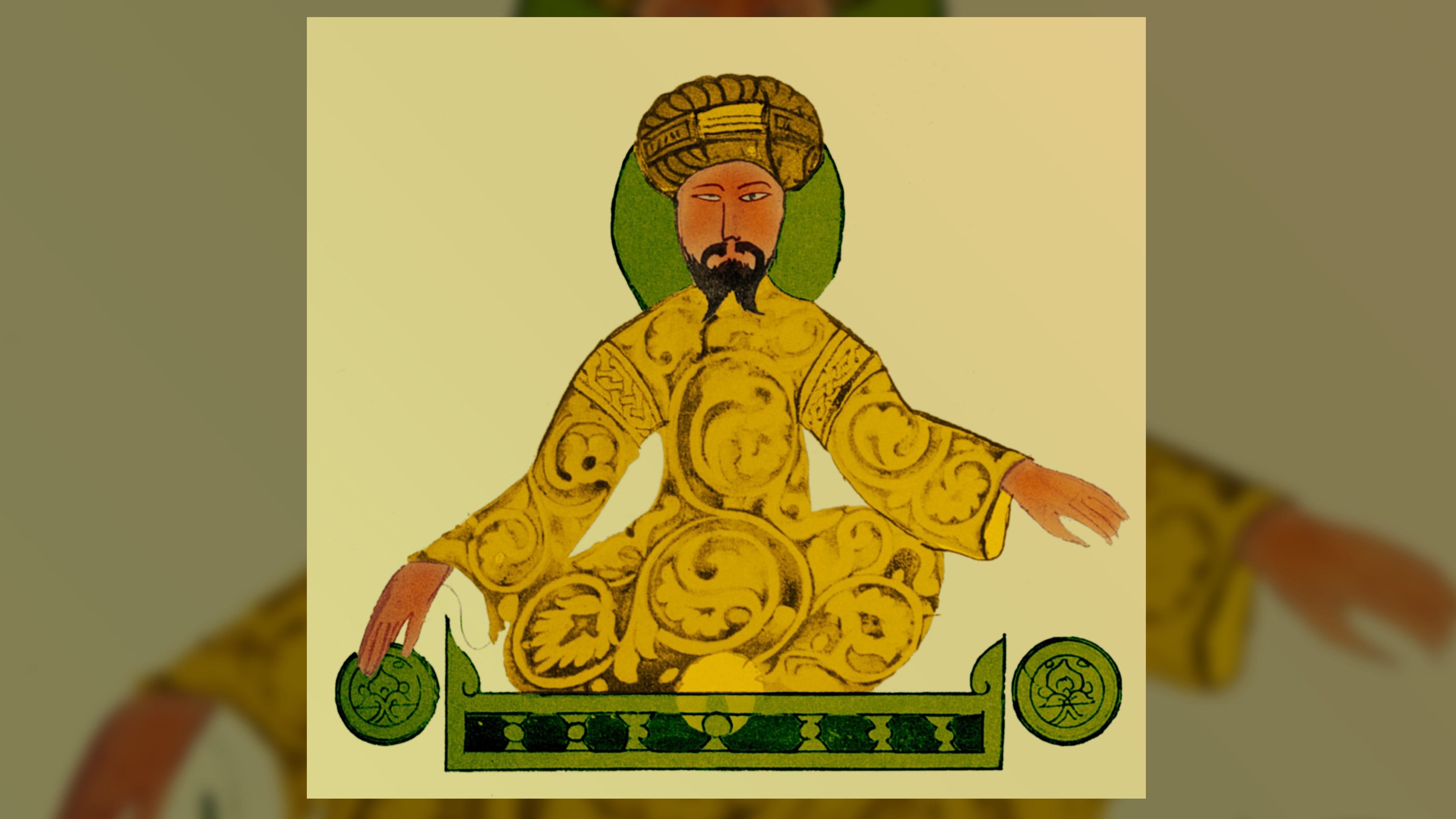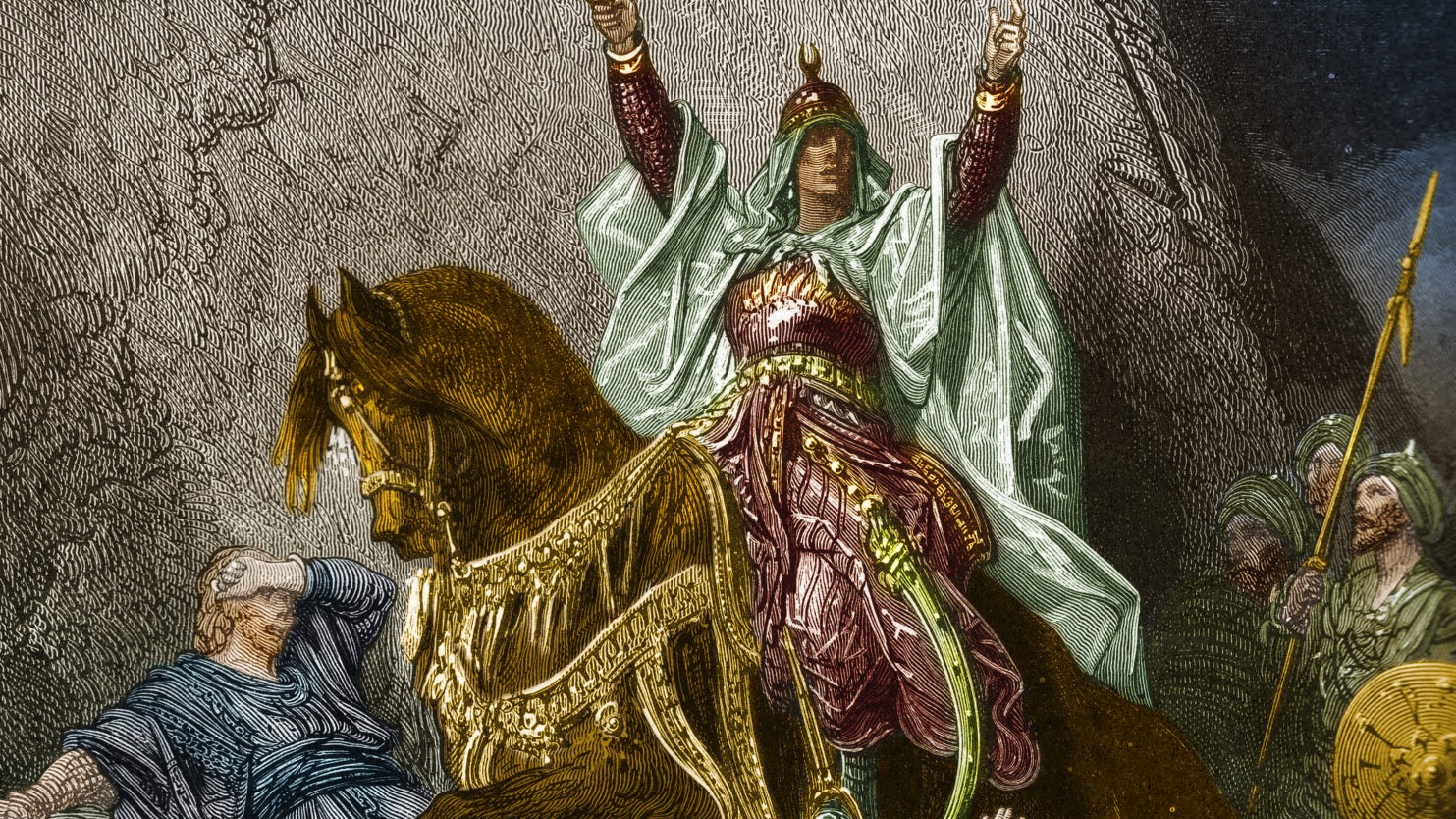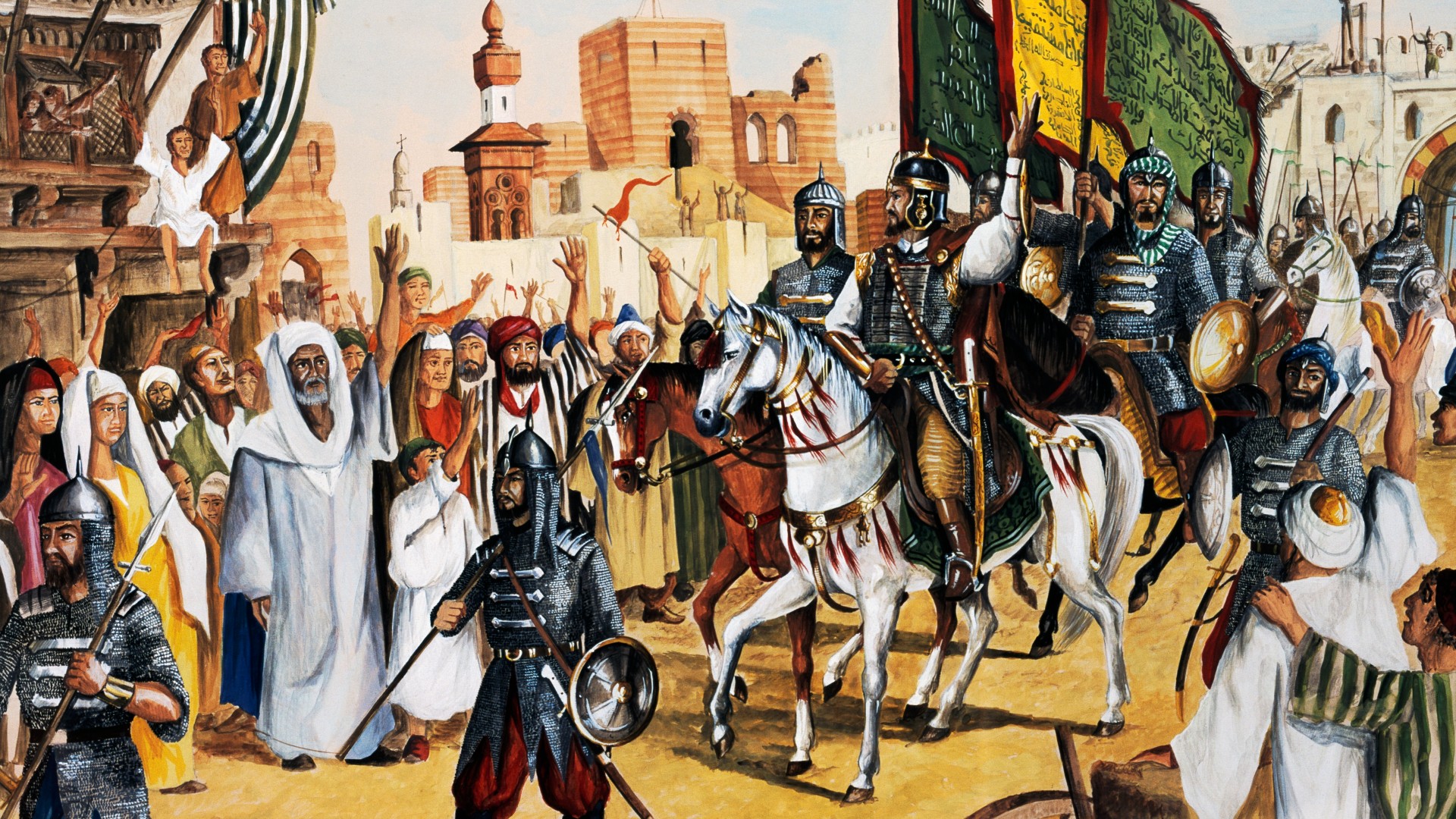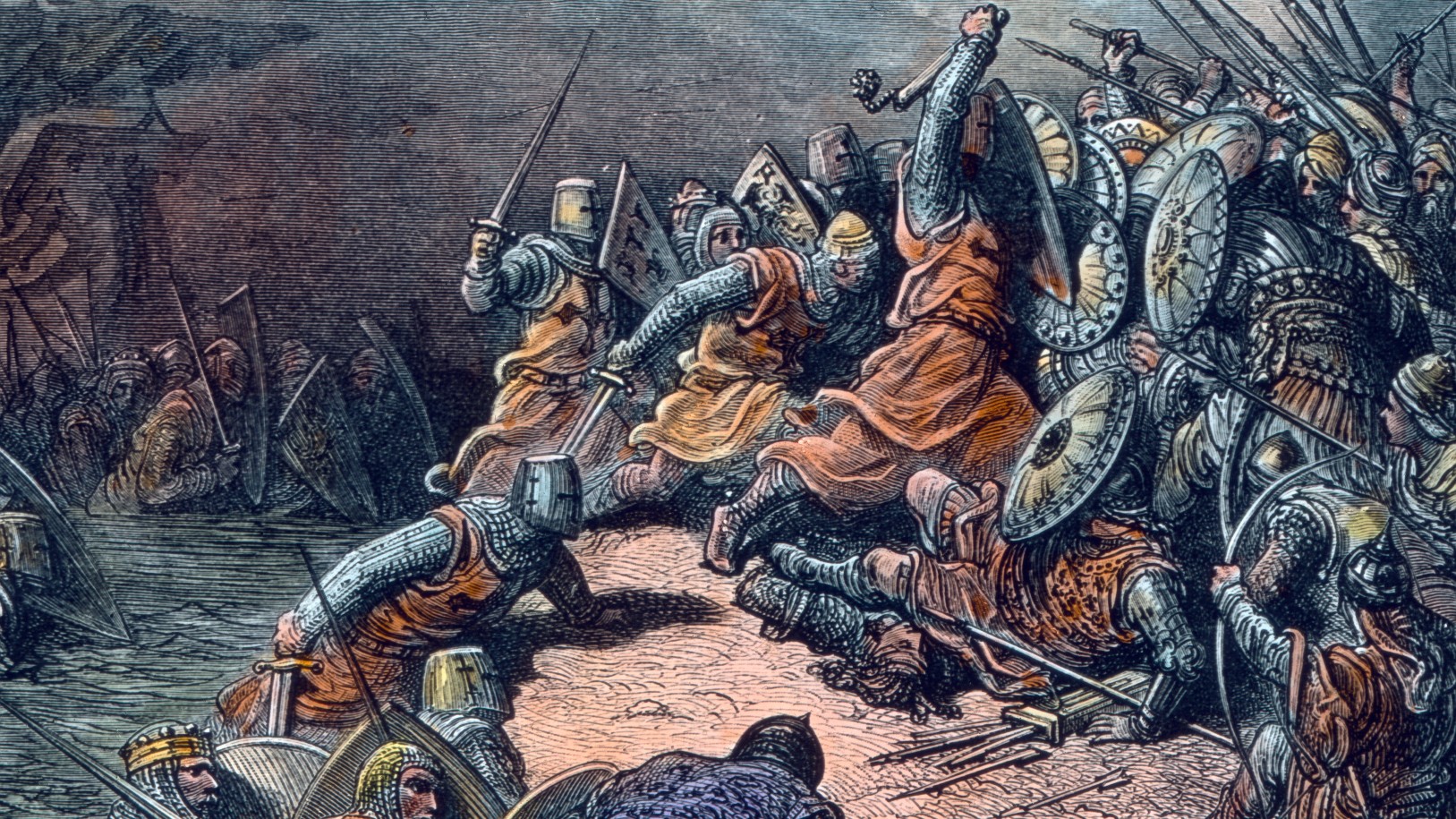Saladin: Muslim ruler who defeated the Crusaders
Saladin reclaimed Jerusalem from the Crusaders and fought with Richard the Lionheart to establish the Ayyubid Dynasty.

Saladin was the founder of the Ayyubid dynasty, the first sultan of Egypt and Syria and the man who united the Muslim world against the Crusader forces of Europe. He famously recaptured Jerusalem from the Crusaders in 1187, which ended the Second Crusade. This kickstarted the Third Crusade as several kings of Europe, including Richard the Lionheart, headed to the Holy Land to reclaim the city.
Saladin is remembered as a great military leader whose legacy as a uniting figure for different Islamic sects means he is a prominent figure in a number of cultures. He also has a positive reputation in the West, despite having fought against the Crusaders, thanks to perceptions of his relative nobility and fairness.
Where was Saladin from?
Saladin, full name Al-Nasir Salah al-Din Yusuf ibn Ayyub, was a Sunni Muslim Kurd, born in Tikrit, Upper Mesopotamia (modern-day Iraq) in 1137, known in his younger years as simply Yusuf. He was the son of Najm al-Dīn Ayyūb, a politician and soldier, and the family moved around, living in Baalbek, then Mosul during Saladin's early life and later Damascus as he approached his teenage years.
"His father, Ayyub, took him to Baalbek in today’s Lebanon to escape a family feud. This was the first of many strokes of good luck that shaped his life. Baalbek — ancient, with crisp air smelling of orchards and gardens — was at the centre of the Muslim world, which reached from Spain to India and inspired glorious buildings, rich literature and first-rate science," wrote John Man, historian and author of "Saladin: The Life, the Legend and the Islamic Empire" (Random House, 2013) in "Saladin: The First Sultan" for All About History magazine issue 102.
Little is written about Saladin's early childhood and education, but he appears to have learnt classical literature, arithmetic and law. He could speak both Kurdish and Arabic. He also grew up in close proximity to Nur al-Din who would go on to rule northern Syria. "Through his father, he had long-standing connections with Saladin’s father, who became Nur al-Din’s top aide. From boyhood. Saladin knew Nur al-Din well," wrote Man.
Saladin's rise to power
Saladin got his first experience of leadership in Egypt 1163, helping Nur al-Din support a local vizier reclaim his power in the caliphate that ruled the region. While that vizier would then turn on Nur al-Din. Saladin was then sent again to Egypt to take control on Nur al-Din's behalf. When his more senior partner in this venture died suddenly, Saladin found himself elevated.
"The obvious successor was Saladin. In a lavish ceremony, Caliph al-Adid confirmed him in office, spelling out in flowery words Saladin’s duty to wage holy war: 'As for the jihad, thou art the nursling of its milk… Gird up therefore the shanks of spears to meet it'. Saladin, his modesty unaffected by power and splendor, committed himself not just to jihad, but also to good government and service to the Sunni Caliph in Baghdad," wrote Man
However, he now found his loyalties divided between Egypt where he was now an advisor to the young caliph al-Adid, to the caliph in Baghdad and to Nur al-Din in Damascus. Meanwhile, the presence of so many Syrians in Egypt was raising tensions in the region too.
Get the world’s most fascinating discoveries delivered straight to your inbox.
"In response, he built a ruthless secret service, put his father in charge of Alexandria and his elder brother in charge of the south, built up the navy and replaced Shiite officials with Sunnis. On the first day of the Muslim new year (Sept. 10, 1171), in the Friday prayers, he had the name of the local caliph replaced by that of the Baghdad caliph— the start of Saladin’s Ayyubid Dynasty (1171-1260)," wrote Man.
He was additionally aided by the surprising death of the caliph aged only 20, possibly from poisoning. Saladin was now ruler of Egypt and still only in his early 30s.
How Saladin united the Muslims

The early years of Saladin's rule in Egypt seem to have been very successful with taxation of the rich, alms given to the poor and trade encouraged among all nationalities and religions. In 1174, another fortunate turn of events played into Saladin's hands as Nur al-Din, his mentor, collapsed and died after playing a game of polo.
"Saladin saw he could fill the void by pursuing a grand vision: to unite Egypt and Syria, and on this foundation retake Jerusalem and drive out the Crusaders. To do this, he had to get back to Syria," wrote Man.
Saladin was invited by the governor of Damascus to take control of the city, and so he left Egypt, now much richer and prosperous. While Saladin downplayed his ambition, Damascus offered a foothold in Syria, but the other major cities of Mosul, Edessa, Aleppo, Hama, Baalbek and Homs were all semi-independent.
"It took two years to beat or cajole them into allegiance. Twice he survived attempts on his life by the most violent of the Shia subsects, the Assassins, dedicated to killing anyone of whom they disapproved. Again, he proved adept at leadership. Future unity meant that current enemies would one day be allies, so he was magnanimous, banning indiscriminate slaughter and releasing captives. By 1176, when he returned to Cairo, he was master of Syria, Egypt, and much of north Africa and the west of Arabia," wrote Man
Only Aleppo and Mosul remained outside his control. It was at this point he took the name Sultan Salah al-Din meaning 'Righteousness of the Faith'. However, before he could consolidate his power further he was attacked by Reynald de Châtillon, a Christian crusader who had been harrassing Muslim caravans.
He caught Saladin off guard, attack his men at Montgisard in 1177, killing 2,000 of Saladin's men. "This was a low-point for Saladin. His authority remained tenuous in a region seething with unstable elements. It suited both sides to agree a truce. It would take several years for the tide to turn in Saladin’s favor, as the contestants jockeyed for advantage," wrote Man.
The aggressive actions of Reynald did help bring more Muslims to Saladin's banner. Further provocation in 1183 when 150 of Reynald's men were killed or captured raiding on either side of the Red Sea meant an attempt by Saladin on Jerusalem, the heart of the Crusader kingdom, was more and more likely.
Saladin versus the Crusaders
From 1174, Jerusalem was ruled by King Baldwin IV who, despite being incapacitated by leprosy, as considered an effective leader. Saladin and Baldwin had faced one another at the Battle of Montgisard, where the then 16-year-old Baldwin won a surprise victory in that surprise attack. A truce had held between the leaders for some time since. However, after his death in 1185, the throne of the Kingdom of Jerusalem passed to his sister Sybilla, who in turn crowned her husband Guy de Lusignan as king.
Reynald broke the truce soon after, attacking another caravan and drawing the Muslim world to war against the Crusaders, totalling a force of 30,000 men. Guy de Lusignan rallied 20,000, but their plan to remain close to water was poorly thought through. Saladin meanwhile had camels ferrying water to his troops, keeping them refreshed. On July 4, 1187, Guy began the march to Hattin in the hopes of reaching water, only to be harassed and blocked on the way by Saladin.
"Saladin’s men harried them, setting fires to add smoke to the insufferable heat. Ahead Muslim cavalry blocked the way. A small gap led uphill towards a few shallow pools at an abandoned hamlet. The Christians retreated up the slop, a mêlée around the True Cross, only to find the pools dry. Fighting off a hopeless counter-attack, the Muslims moved in, killing at will, and seized the True Cross. Survivors, exhausted and despairing, collapsed on the ground, awaiting death or capture," wrote Man.
Guy and Reynald were captured and brought to Saladin's tent. The events in this tent have been told in different ways, but revolve around a custom that prisoners who were offered refreshment were to be spared. According to Geoffrey Hindley in his book "Saladin: Hero of Islam" (Pen and Sword Military, 2010), Guy asked for water, which he was given, but he passed the cup to Reynald to drink first. Saladin then made clear that gesture would not protect him and left.
"Returning in the evening he entered the tent housing the prisoners and at once summoned Raynald to stand before him; then and there Saladin felled him with a blow which caught him on the shoulder. A guard struck off the head and the corpse was dragged out by the heels. Guy, already exhausted physically and emotionally, assumed this was the beginning of a general killing. His European background made it impossible for him to accept that the lord of the infidels could be a man of his word," wrote Hindley.
But Saladin did spare Guy along with the other captured nobles. The lesser knights were not as fortunate. Man estimates that between 30,000 and 40,000 people died in the battle and with that the Kingdom of Jerusalem was virtually won by Saladin.
Saladin captures Jerusalem

Now it was time for Saladin to set his sights on Jerusalem, but first he secured the region around the ancient city to strengthen his chances of victory. He secured some of the surrounding region and coastline before arriving at Jerusalem on Sept. 20, 1187. His troops gathered near Jaffa Gate on the western side of the city.
"Jerusalem was commanded by Balian of Ibelin, head of an eminent Crusader family, who had been allowed briefly into the city to save his wife— a remarkable example of Saladin’s chivalry. Having discovered Jerusalem to be leaderless, he had stayed, sending Saladin an apology for breaking their agreement," wrote Man. Few remained in Jerusalem, but they swore to fight to the death.
"A blast of trumpets accompanied by pounding drums and fierce chanting generated an ominous atmosphere intended to intimidate the Christians. Arrow-fire rained towards the walls, taking a heavy toll on the defenders; even the vast Hospital of St John, arguably the greatest hospital in Latin Christendom, could barely cope with the numbers of wounded," wrote Jonathan Phillips, author of "The Life and Legend of the Sultan Saladin" (Yale University Press, 2019).
With the city full of refugees from the surrounding area hoping to find protection within the walls of Jerusalem, fear took hold and there was little expectation of mercy, according to Phillips. Shifting focus to the north, Saladin's bombardment finally broke through the walls, signalling an imminent victory for his forces and forcing Jerusalem's defenders to seek terms with Saladin.
"At first Saladin refused, setting chivalry aside. 'I want to take Jerusalem the way the Christians took it from the Muslims 91 years ago,' he said, according to Imad al-Din. 'The men I will slaughter, and the women I will make slaves.' In response Balian threatened to raze the city, leaving Saladin nothing. 'We shall throw ourselves into the flames rather than accept destitution and shame.' So Saladin abandoned violence for mercy," wrote Man.
The Christians within the city who wished to leave would have to pay 10 dinars for a man, 5 for a woman, one for a child as ransom. Balian personally offered to pay 30,000 dinars to allow the escape of the elderly and poor, according to Man. On Oct. 2, 1187 Jerusalem officially surrendered to Saladin, an auspicious date, according to Phillips, as it coincided with anniversary of the "Prophet’s Night Journey" when Muhammad is said to have ascended to heaven from Jerusalem.
The Third Crusade

Saladin's capture of Jerusalem soon saw a response from Christian Europe, which gathered its strength and funding to begin a Third Crusade to reclaim the city and its kingdom in 1189. This included a 10 per cent levy on revenues in England and France called the 'Saladin tithe', according to Phillips. The Crusade had at its head would be Richard I of England, better known as Richard the Lionheart, Philip of France and Holy Roman Emperor Frederick I.
Three years of battles and sieges ensued, led mostly by Richard the Lionheart, interspersed with short-lived truces between the two leaders. Richard's forces faced Saladin at the Battle of Arsuf in 1191 and the Battle of Jaffa in 1192 as the Christians regained a foothold in the region.
Jaffa was significant as a port town from which Richard hoped to launch an attempt to take Jerusalem, according to Hindley, although it was currently under Saladin's control with only the citadel holding out against his siege since July 27, 1192. "Here at Jaffa was the scene of one of his greatest acts of military virtuosity," wrote Phillips. He took the port town quickly with a ferocious attack from the sea, driving out the Ayyubid forces.
These back and forth battles with Richard were beginning to take their toll on Saladin, according to Philips. "In the context of Saladin’s extraordinary labours — the years spent riding hundreds of miles around the Near East, fighting, motivating people, taking on the responsibility for leading the jihad against the crusaders and preserving the Muslim hold on Jerusalem, leading his family, not to mention his own serial health problems — it becomes understandable that from time to time, the longer these various hardships went on, so his bodily and mental well-being showed signs of creaking under such phenomenal strain," Philips wrote.
His attempts at a counterattack failed and while Crusaders numbers were depleted and illness struck both sides, the battle over Jaffa dragged on to a stalemate. Richard refused to give up Jaffa and Saladin's forces no longer had the will to take it, according to Hindley. After Aug. 5 Saladin returned to Jerusalem and negotiations for a new peace began. While the Crusaders had to give up Ascalon, they retained control of the coast from Acre to Jaffa and were once again permitted to visit their holy places in Jerusalem and elsewhere in the Ayyubid realm.
Richard, now also ailing, left for England from Acre on Oct. 9 with a parting message for Saladin. "His last message to Saladin was that when the three-year truce was over he would return to take Jerusalem. The chivalrous reply came back that if Saladin had to lose his lands to any king there was none more worthy to win them than the king of England," wrote Hindley.
Saladin's death and legacy
Saladin would not live to see the return of the Crusaders. Severe fatigue plagued him and early in 1193, fever and sickness had physicians attending to him regularly, causing great concern among his closest allies. Despite years of battle and conquest, Saladin would die peacefully in his bed, possibly as a result of typhoid.
"After 12 days of illness, on 4 March 1193, a sheikh was reading to him from the Quran when he died. Carried through wailing crowds, he was buried nearby, leaving a unique reputation. Muslims adored him— mainly Sunnis, for Shias bore the brunt of his ruthlessness. Christians admired him because he exemplified so-called Christian virtues, in contrast to the behaviour of their own leaders," wrote Man.
The legend of Saladin has outlived the man for centuries, making him an important figure in Islam, but he was also revered by western writers in his own time, making him a popular historical figure more broadly.
"Most scholars and students of history think of Saladin in terms of the myth that was fabricated about him, and whose roots are in the European imagination to turn him into the perfect other, a civilized, generous, and chivalrous Muslim counterpart to Europe. As Cecil B. DeMille presented in his 1935 Academy Award nominated motion picture The Crusades, the clemency and foresightedness of Saladin were markedly distinguishable from the brutality and petty-mindedness of his European foes," said Suleiman A. Mourad, Professor of Religion at Smith College, in an interview with All About History.
Additional Resources
If you want to learn more about some of the important figures in the Crusades then you should read all about the Knights Templar and who they really were.
For more about an important element of Muslim culture and history you can learn what Ramadan is as well.
Bibliography
- "Saladin: The Life, the Legend and the Islamic Empire" by John Man (Random House, 2013)
- "Saladin: Hero of Islam" by Geoffrey Hindley (Pen and Sword Military, 2010)
- "The Life and Legend of the Sultan Saladin" by Jonathan Phillips (Yale University Press, 2019)
- "Hattin 1187: Saladin's greatest victory" by David Nicolle (Osprey Publishing, 1993)
- "Saladin: The First Sultan", All About History magazine issue 102.

Jonathan is the Editor of All About History magazine, running the day to day operations of the brand. He has a Bachelor's degree in History from the University of Leeds. He has previously worked as Editor of video game magazines games™ and X-ONE and tech magazines iCreate and Apps. He is currently based in Bournemouth, UK.


